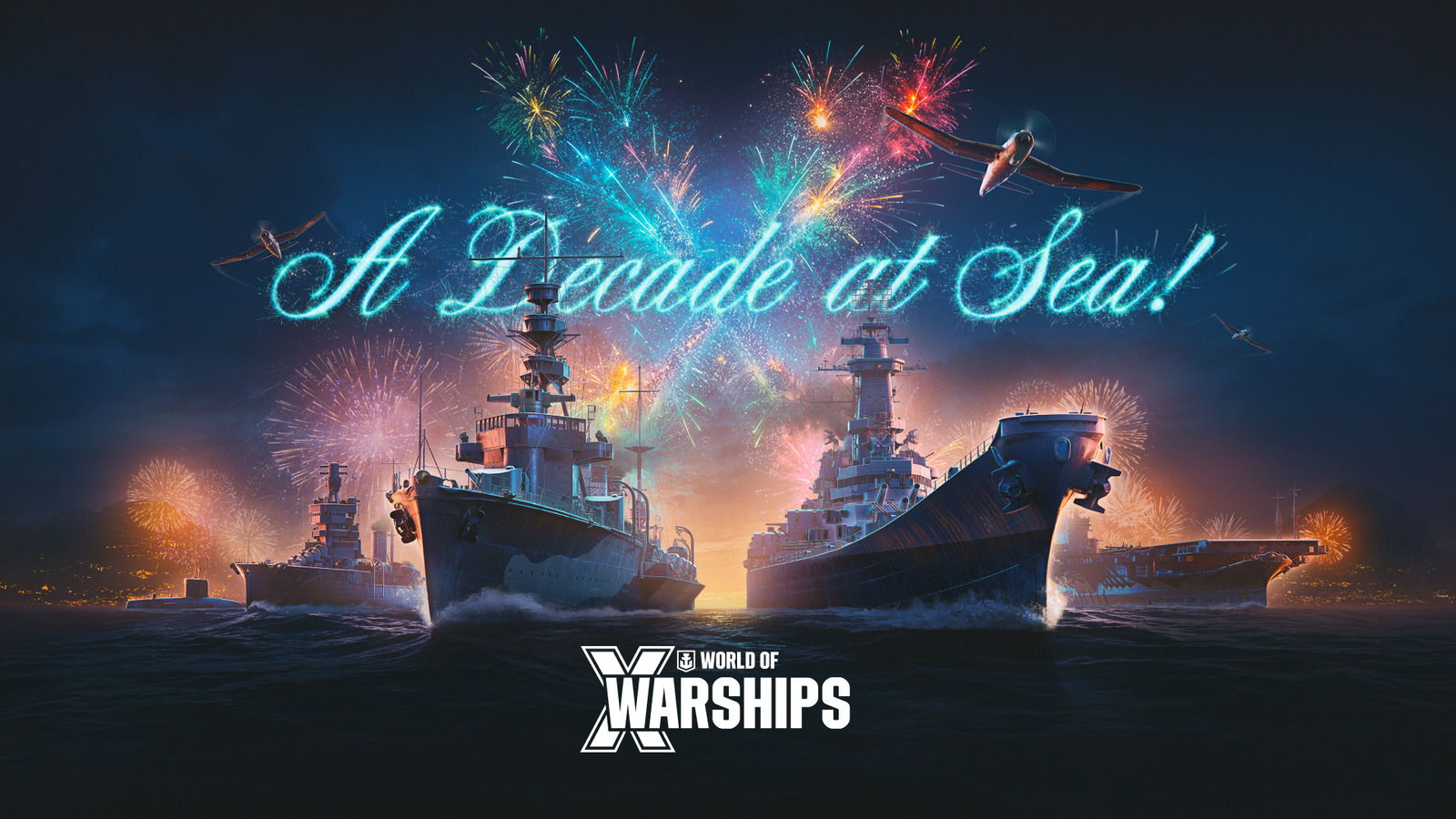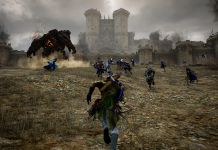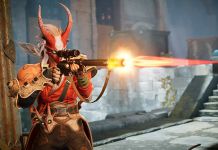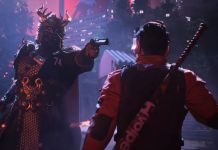An Interview With Wargaming, As World Of Warships Celebrates Its 10th Anniversary
How the free-to-play shooter evolved, kept players around in the live service games industry, and expanded to consoles and mobile.

World of Warships is celebrating its 10th anniversary. According to Wargaming, the free-to-play shooter has seen 1.2 billion hours of gameplay across nearly 1 billion battles over this period. I had the opportunity to interview Artur Plociennik, North American Publishing Director, to discuss the game’s evolution since 2015, how it has kept players engaged, key lessons for longevity in live service games, and its expansion to consoles and mobile.
MMOBomb: Looking back at the past decade, what do you consider the game’s “north star” — the guiding principle that has never changed since 2015?
Artur Plocienik: Our “north star” has always been to deliver an accessible yet historically authentic naval combat experience that’s easy to get into, but hard to master. From the very beginning, we set out to create a game that respected real-world naval engineering while offering compelling multiplayer battles. On the other side of that, we’ve always believed in balancing authenticity and historical accuracy against the need to take liberties in game design, to provide a fun, replayable experience, as well as a commercially stable product. Those principles have shaped everything—from how we design ships and work with museums, to how we engage our community with meaningful collaborations and educational content. Fun, historical authenticity, and respect for our players have been the constants across this entire journey.
MMOBomb: Which feature or experiment seemed promising on paper but didn’t land as expected, and what lessons did you take from it?
Artur Plocienik: Like any live-service game, not every feature hits the mark. Some experimental event modes or mechanics looked great on paper but failed to resonate broadly—usually because they added complexity without enhancing core gameplay. A great example is the initial implementation of aircraft carrier gameplay into World of Warships. This featured a totally different interaction style as the other ship classes in the game and ultimately proved to have a different balance scale that did not fit with the rest of the ships and game mechanics. The lesson we’ve taken is the importance of alignment with player expectations: every new system must either deepen strategic choice or offer meaningful rewards. We’ve also learned to prototype and test more iteratively with smaller groups before full-scale implementation.
MMOBomb: How does a healthy retention curve for World of Warships look today compared to five years ago?
Five years ago, we were more focused on the traditional “core gamer” segment. Today, retention looks healthier because we’ve expanded our reach across platforms, skill levels, and interests. Different systems like daily login calendars, Commander progression, or PVE game modes have helped improve retention in different player cohorts, while mid- to long-term engagement is fueled by things like frequent content updates, historical ship releases, and community-driven initiatives. Throughout the last decades, we’ve also changed how we look at market fit, progressively moving towards a better understanding of and catering to the different regional audiences we have and their content needs.
MMOBomb: What is the biggest friction point for new players right now, and how are you addressing it without compromising the depth that veterans value?
Artur Plocienik: The complexity of naval tactics, various game mechanics, and ship types can be overwhelming for new players. To address this, we’re constantly working on new ways to create tutorial content and clarity in communications about the game, its events, and how players can extract the most value out of their experience with the product. A big part of this process is listening to our audience, both through direct feedback gathering and through their gameplay data patterns. These describe how players interact with game systems and allow us to progressively iterate on our designs, as well as experiment with trying out new things in the form of time-limited events, later progressing to permanent implementation if player data and sentiment support it.
In some cases, we’ve also removed mechanics that we felt did not meaningfully contribute to the overall depth of that experience, but were rather seen as obstacles in how players explored that depth – examples include friendly fire or detonation (“headshot”) mechanics. These initially seemed like they belonged in a PVP game by default, but over time, they proved to be a burden more than a boon.
MMOBomb: How do you define “fair monetization” within World of Warships, and where do you draw the line on what to include or avoid?
Artur Plocienik: Fair monetization means offering cosmetic, convenience, or progression tools—not selling direct power. We draw a clear line against pay-to-win systems. Premium ships are balanced against tech-tree counterparts, and players are able to be competitive with just the content that is earnable through regular play. We also include generous premium content drops for free —like the three premium containers gifted during the 10th anniversary—as a way to give back and keep the ecosystem accessible for all types of players.
MMOBomb: When it comes to balancing ships, how do you decide between maintaining historical authenticity and ensuring fun, competitive gameplay?
Artur Plocienik: We always start from historical blueprints and records, or, in their absence, we rely on our in-house team of naval engineers to draw period- and nation-appropriate blueprints of warships. However, gameplay balance is essential in a multiplayer environment. Authenticity informs the baseline—ship size, armament, and certain other aspects like armor layout—while balance adjustments ensure that no vessel dominates due to real-world specs. When needed, we use "paper ships" or proposed variants to fill gaps while maintaining design coherence. It’s a constant back-and-forth between respecting history and creating a competitive, fair battlefield.
MMOBomb: How do you approach choosing collaborations with outside franchises, and what factors make a partnership the right fit?
Artur Plocienik: A great collaboration has to make sense for both the brand and our community. Whether it's Transformers, Azur Lane, Godzilla vs. Kong, or Popeye, we look for partnerships that add personality, align with our naval theme (even loosely), and bring something new to the player experience. Community excitement is a key driver—we analyze reactions, usage data, and social media buzz to gauge fit and value. A partnership isn’t just about IP—it’s about shared storytelling potential.
MMOBomb: Which collaboration surprised you the most in terms of player engagement or new-player conversion, and why?
Artur Plocienik: Our Popeye the Sailor Man collaboration for ocean conservation was a pleasant surprise. It generated high engagement—not just for its nostalgic appeal but because players genuinely appreciated the charitable mission behind it. It brought in new audiences who might not have looked at a naval game otherwise, and it showed us that values-based partnerships can drive both gameplay interest and community pride. Our first anime-inspired collaboration with Arpeggio of Blue Steel -Ars Nova- also comes to mind – its unexpected success beyond just the APAC audience showed us the potential of collaborating with IPs in that genre.
MMOBomb: What changes did you deliberately make for the mobile and console versions to appeal to more casual audiences — and what aspects of the PC experience did you insist on preserving?
Artur Plocienik: With World of Warships: Blitz and Legends, we simplified controls and shortened match durations to fit mobile and console habits. UI and pacing were streamlined to lower the barrier to entry. However, we insisted on preserving ship variety, national tech trees, and the core tactical decision-making that define the PC experience. These adaptations allowed us to retain the soul of the game while opening the door to casual and mobile-first players.
MMOBomb: Looking ahead, what priorities or initiatives can you share for the next year of World of Warships?
Artur Plocienik: We’re focused on deepening community engagement, expanding representation of underrepresented navies, and continuing our charitable and educational projects. Players can expect new ships, more regional Commanders, and another museum gaming room in Europe. On the content side, we’ll continue developing high-quality collaborations and limited-time events, while ensuring that the live-service model stays rewarding for both long-time veterans and new Commanders just coming aboard.
Related Articles
About the Author

Matthew “dinofries” D'Onofrio is a writer, content creator, podcaster and — most importantly — a gamer. With such a strong passion for video games and a severe case of FOMO, it's no surprise he always has his finger on the pulse of the gaming world. On the rare occasion Matt's away from a screen, you'll find him strumming away on his acoustic guitar or taking care of his cat Totoro.
More Stories by Matthew D'OnofrioRead Next

From 3 million at launch to barely 13,000 concurrent...
You May Enjoy

These heroes are some of the best ban targets to consider in Season 5 & Season 5.5

About six weeks before it’s due to launch.

The update introduces a new China-inspired map, 8v8 mode, and more.

The test is available on PC and Android.
Discussion (0)